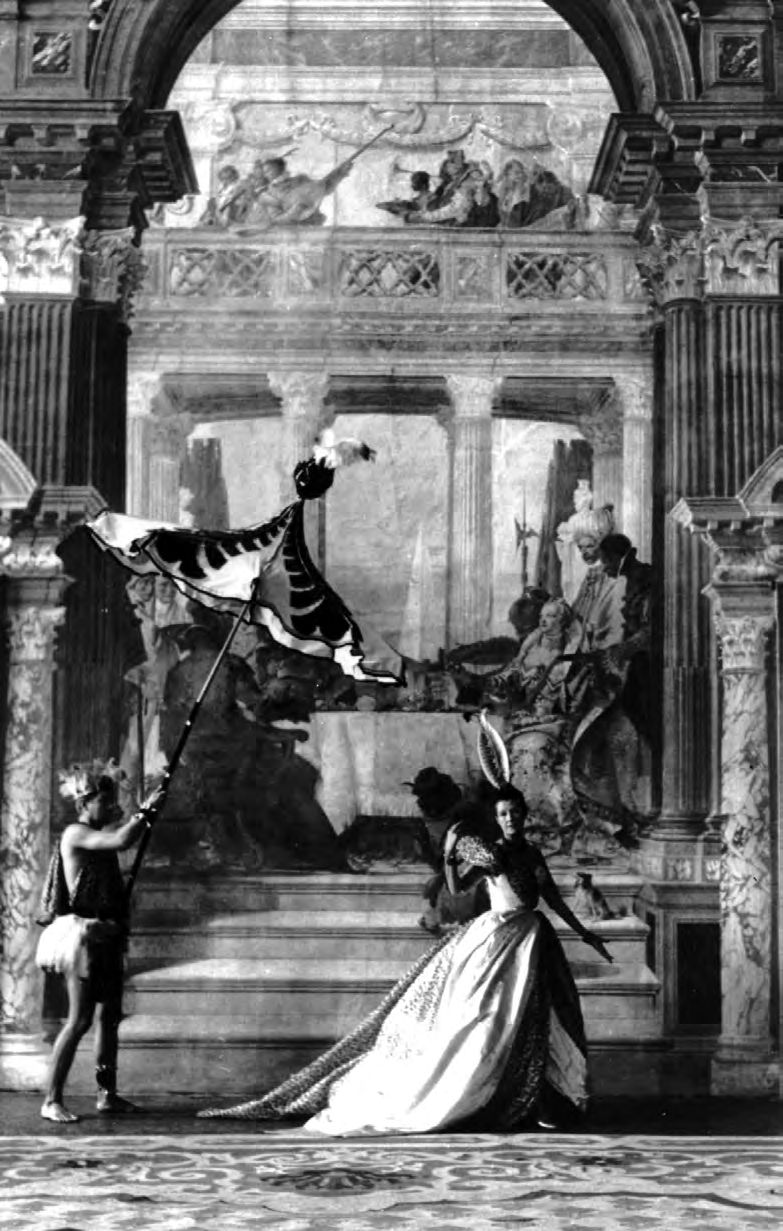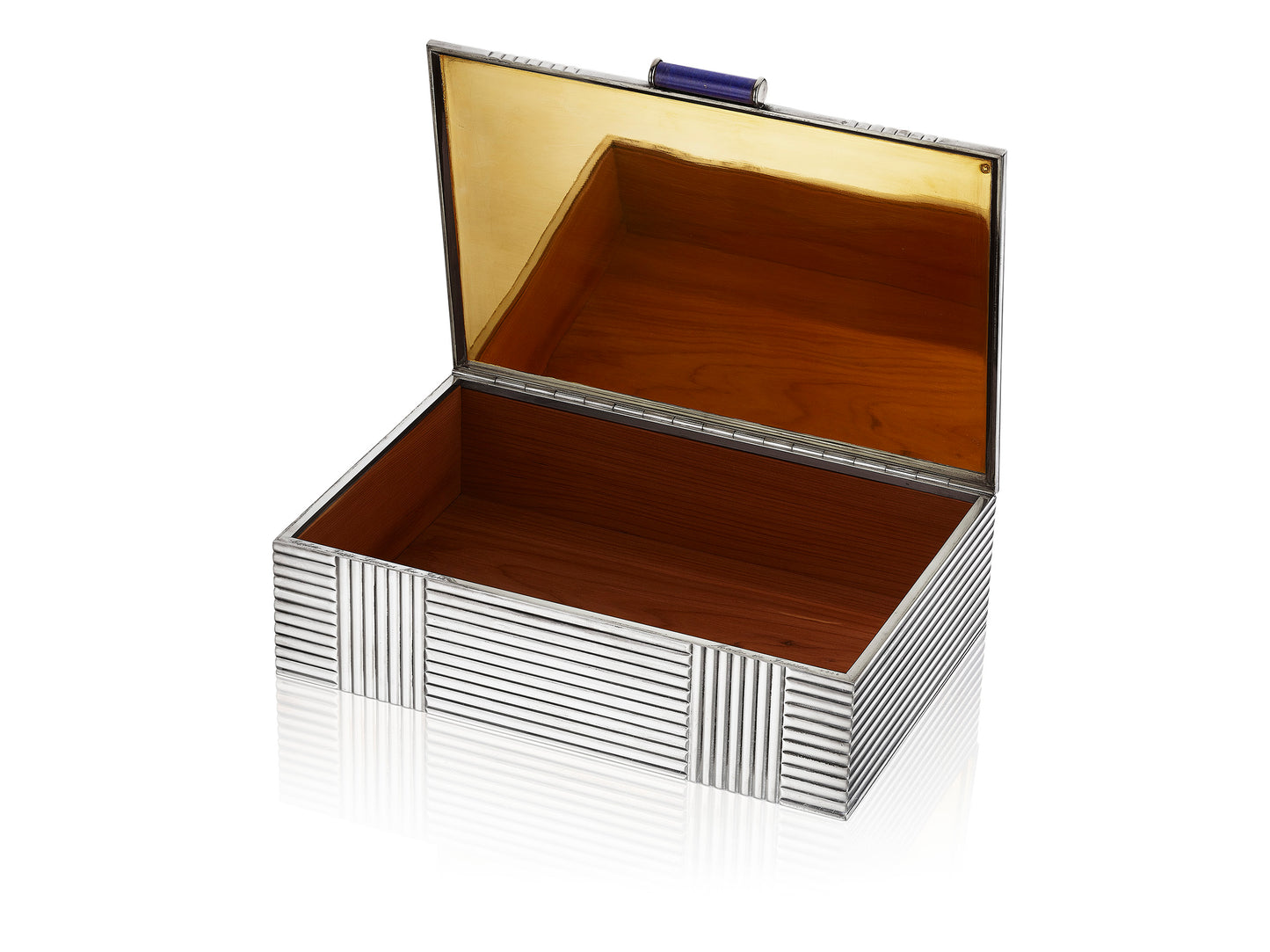
On September 3, 1951, Juan de Beistegui’s uncle, Carlos, threw a part in Venice at his Palazzo Labia that brought the city to a standstill as guests from the Aga Khan to Pablo Picasso descended upon the ballroom frescoed by Tiepolo. Daisy Fellowes is shown here in a Cecil Beaton photograph in her party dress.
ART DECO SILVER, GOLD, AND LAPIS LAZULI BOX BY CARTIER, PARIS, CIRCA 1925
ART DECO SILVER, GOLD, AND LAPIS LAZULI BOX BY CARTIER, PARIS, CIRCA 1925
SOLD
A box composed of reeded silver, the thumb piece a lapis lazuli cylinder set in gold, interior with fitted mirror in gold and the interior lined with wood; sterling silver and gold with French assay marks
- Signed Cartier Paris Londres New York, Made in France S226
- Length: 6 1/2 x 4 5/8 x 1 13/16 inches
Additional cataloguing
Provenance
Juan de Beistegui
Biography
Cartier was founded in Paris in 1847 by Louis-François Cartier. His three grandsons, Louis, Pierre, and Jacques, built the house into a famous international jewelry empire serving royalty, Hollywood stars, and socialites. Cartier has created some of the most important jewelry and objects of art of the twentieth century with many iconic designs such as mystery clocks, Tutti Frutti jewelry and the Panthère line. In 1983, The Cartier Collection was established with the objective of acquiring important pieces that trace the firm’s artistic evolution. Today, Cartier has 200 stores in 125 countries.
Significance
From Cartier’s founding in the 19th century, the company has offered a variety of decorative and functional objects to their clients. Louis Cartier said, “We must make it our business to build up an inventory that responds to the mood of the public by producing articles which have a useful function but which are also decorated in the Cartier style.” In the 1920s, the booming postwar economy provided spending money for new clients interested in luxury goods for use in daily life.
The reeded pattern on this silver box is a play of shadow and light interrupted by two perpendicular bands evoking the straps on traveling luggage. The box opens by means of a cylindrical lapis lazuli thumb piece set in gold to reveal a mirror and a wood interior originally made to hold cigars. The spare design of this box is directly influenced by significant changes in technology in the early twentieth century. Modern innovation increased production, made cars and trains faster, and allowed buildings to be built taller. Suddenly machinery was everywhere, which was reflected in art and design. Stripping down the decorative excess of earlier eras, a group of designers emerged who adopted a mechanical aesthetic later known as Art Moderne, or Streamline Moderne. This new style embraced the role of machinery in modern life, foregoing naturalistic ornamentation and using materials that played on volume using light and shadow.
This box was in the collection of third-generation art collector Juan de Beistegui. The famed family has a room named after them at the Louvre and championed collecting important works for more than a century. Juan inherited Château de Groussay from his eccentric uncle Carlos de Beistegui, a collector famous for throwing the “party of the century,” the famed Bal Oriental at his Palazzo Labia in Venice with an incomparable guest list. Juan focused on acquiring French furniture with royal provenance, botanicals, and selected important objects, such as this box. With an impeccable construction and elegant design, this box embodies the clean mechanical aesthetic of the late Art Deco period and would be an important addition for any collector.

On September 3, 1951, Juan de Beistegui’s uncle, Carlos, threw a part in Venice at his Palazzo Labia that brought the city to a standstill as guests from the Aga Khan to Pablo Picasso descended upon the ballroom frescoed by Tiepolo. Daisy Fellowes is shown here in a Cecil Beaton photograph in her party dress.











